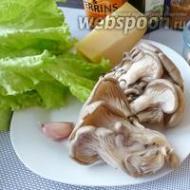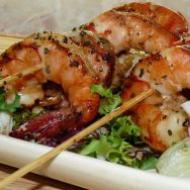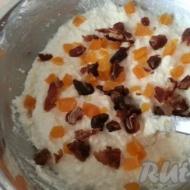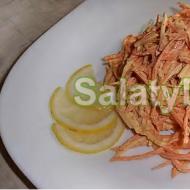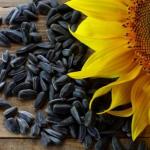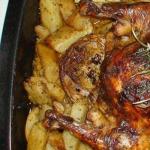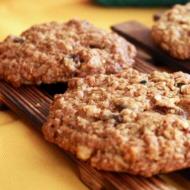
Hibiscus tea - beneficial properties and contraindications. Hibiscus tea, composition, use in medicine Chemical composition of hibiscus tea
Hibiscus is a plant of the mallow family - a species of Rosella, the height of which reaches 3.5 m. The stem, like the leaves, is green with red hues. The flowers are 5-7 cm in diameter and have a distinct, special aroma. In the language of science, the name of this plant is Hibiscus sabdariffa.
The homeland of the famous hibiscus tea is India, but today it is cultivated in many countries of the world with a tropical climate, such as Mexico, Egypt, Sri Lanka, China, Sudan and others.
For example, in Sudan this drink has become so popular that it even began to be called differently - “Sudanese rose”.
In Egypt, this tea was a special drink - the privilege of the reigning persons. Then people believed that he was able to bestow enormous strength and give eternal life.
In Malaysia, hibiscus is better known among the population under the original name “bunga raya”; moreover, it is a national drink, which is even present on the state emblem. And Muslims are convinced that the five petals of this plant symbolize the five rules of the Koran.
As the petals wither, only the flower cups remain on the hibiscus, which increase in size over time and fill with juice. They are collected just during this period, after which they are dried and produced an excellent tonic hibiscus tea.
The color and taste of tea directly depend on the place where the hibiscus grew and differs for each plant. Thus, Egyptian hibiscus is cherry-colored with a sour taste, Mexican hibiscus is characterized by an orange tint with a slightly salty taste, and the drink, originally from Thailand, is slightly sweeter and has an unusual purple hue.
Separate parts of this plant are also used in cooking and cosmetology. For example, roots and stems are used in textile production - for dyeing.
Chemical composition of hibiscus
Since hibiscus tea is obtained from a plant that belongs to the Rosella species, it is worth considering in more detail the chemical composition and properties of this product. Rosella (100 g) fresh contains:
- water (58 - 86 g);
- fats (0.64 g);
- proteins (0.96 g);
- carbohydrates (11.31);
- ash components (0.51 g).
Hibiscus also has a whole range of useful vitamins. For example, group B: thiamine (0.01 mg), riboflavin (0.03 mg). There is also vitamin A. The vitamin C content in this product (quantitative ratio) is 12 mg per 100 g. Hibiscus contains another very useful component: vitamin PP, another name is niacin (100g - 0.31 mg).
But micro and macroelements are present in hibiscus in much larger quantities. So 100 grams of this plant includes 215 mg of calcium, which is 22% of the daily intake required by the human body. There is not much magnesium - only 13% of the norm (51 mg). Iron and calcium - 8%. This drink also contains phosphorus and sodium components.
Benefits and properties of hibiscus
Hibiscus is a very ancient plant, and accordingly, its properties to heal ailments have been known since ancient times. For example, in Egypt, dried parts of this plant were found in the burial places of the pharaohs. African peoples also have many medicinal recipes using hibiscus tea. In many countries of the world where this “magical” plant grows, it is considered a salvation from most ailments.
Modern research also confirms that hibiscus contains powerful antioxidants that prevent the effects of free radicals on the body's cells, and some components of hibiscus prevent the development of various types of tumors. Simply put, by including hibiscus tea in your diet, a person can resist cancer.
Of course, antioxidant content is not all that this drink is rich in. If you consume several cups of hibiscus daily, you can normalize your blood pressure. The current opinion that it is necessary to drink hibiscus tea exclusively cold is a myth, since any liquid, when entering the body, becomes the same temperature as our body, accordingly, you can drink this drink as you like.
Roselle also contains a lot of vitamin C, which makes it a miraculous, excellent remedy for colds. During the cold season, a cup of hot hibiscus tea will not only warm you up, but also help you restore your strength.
This drink can have a positive effect on the genitourinary system, which makes it especially popular among men.
Hibiscus has proven itself to be excellent in complex therapy for diseases of the intestines, liver, stomach, and kidneys. If you use it in accordance with a certain scheme, then, due to its mild laxative effect, it will perfectly cleanse the body of toxins and normalize the functioning of the digestive tract.
In addition, the benefit of hibiscus lies in the content of the most important components for our body - anthocyanins, due to which the shades of hibiscus flowers become more saturated. These components have a strengthening effect on the walls of blood vessels (affect their permeability) and reduce the level of bad cholesterol.
The use of this tea is contraindicated, first of all, for those people who have high acidity or stomach and duodenal ulcers, due to its ability to increase the acid level of gastric juice.
In addition, this product can cause significant harm to health if a person has an illness such as hypotension.
And of course, when drinking this tea, it is worth taking into account the body’s individual intolerance to its individual components.
Hibiscus drink is a tea familiar to many with a characteristic red hue and sour taste.
Hibiscus tea is highly valued for its beneficial properties and composition rich in healing substances.
With the help of a wonderful and aromatic drink, you can not only enjoy tea, but also get rid of many ailments that bother the body.
Chemical composition of hibiscus tea, beneficial properties of the drink
Hibiscus tea is extracted from the hibiscus plant. Each component of this plant, including leaves, stems, seeds and flowers, is endowed with healing qualities, which are determined by its rich composition. It includes:
Vitamins A, C, P and group B;
Fruit acids, which occupy from 15 to 30% of the composition of hibiscus. These are citric, malic, tartaric, hydroxycitric acids, which have a disinfectant function;
Polysaccharides;
Pectins;
Anthocyanins and alkaloids;
The antioxidant quercetin, which serves as a natural red dye for tea and has antispasmodic, anti-inflammatory and antitumor effects on the body;
Bioflavonoids;
Microelements: sodium, phosphorus, calcium, iron, potassium;
13 amino acids, of which 6 are essential.
When brewing a standard amount of tea for 1 mug, the calorie content of such a drink will be less than 1 kcal.
A special drink of hibiscus - tea with beneficial properties and healing qualities.
The miraculous hibiscus drink contains a huge number of beneficial properties, ranging from strengthening hair to a beneficial effect on the gastrointestinal tract. It is the benefits of the components in the composition that determine the value of red tea. Its useful qualities:
1. The leaves of the plant can have a diuretic effect, so tea is used to treat diseases of the kidneys, liver and biliary tract.
2. Red decoction has antipyretic, antibacterial and antispasmodic effects on the body.
3. The juice of fresh leaves, the raw material for tea, normalizes menstrual irregularities.
4. Hibiscus root gives the body a calming and laxative effect.
5. Hibiscus flower elixir is a powerful aphrodisiac and can also lower blood pressure. Regular consumption of 3 cups of tea per day can normalize unstable blood pressure.
6. With the help of hibiscus, you can cure some gastric diseases and eliminate internal pain in the gastrointestinal tract.
7. Red tea calms the nervous system, relieves stress, and relieves depression.
8. Tea can stimulate hair growth, fight dandruff and help darken your hair several shades. All this is possible thanks to the unique chemical composition.
9. The richness of the drink in vitamin C is manifested in reducing the duration of infectious diseases.
10. The drink is a strong antioxidant, which can fight the development of free radicals, which are causative agents of cancer.
11. A miraculous drink that saves you from hangovers and alcohol poisoning.
12. The diuretic function of red tea will be useful for those people who are actively struggling with extra pounds. Fruit acids improve metabolism, which has a positive effect on the rate of breakdown of accumulated fats.
13. By storing vitamin C, hibiscus copes well with colds. It is important to note the value of anthocyanins, which protect cells from cancerous degeneration and affect the walls of blood vessels, strengthening them.
14. Hibiscus tea can be consumed by people suffering from diabetes, because it lowers cholesterol levels and triglycerides in the body.
15. The hibiscus plant can be used for inflammatory processes, such as cough and sore throat, it thins and removes mucus from the lungs.
16. Tea has a choleretic effect, relieving swelling and without affecting the cardiovascular system, which is extremely important.
17. Easily cope with constipation, gently cleansing the intestines and removing heavy salts from it.
Hibiscus drink is a natural and environmentally friendly “helper”.
It has a tonic and strengthening effect that fights cancer, improves digestion, acts as an antiseptic and lowers cholesterol.
Recipes for brewing hibiscus tea and the beneficial properties of hot drinking
1. Brewing according to the standard recipe. You need 1 tbsp. l. pour hibiscus tea leaves into a teapot with 2 cups of boiled water and let the drink brew until it turns dark red. Then the liquid needs to be diluted with two more glasses of water; if desired, you can add honey, mint, ice cubes, cinnamon and other spices.
2. Recipe of the Pharaohs. This recipe requires a long preparation time. It is necessary to pour a portion of hibiscus petals with 1 liter of cold water and let the liquid stand for 3-4 hours, or better yet, overnight. Then the tea should be put on low heat, brought to a boil and boiled for 5 minutes. All that remains is to strain the drink, and you can consume it in any form.
Harm to hibiscus tea and contraindications of the drink
Like many other medicinal and healing plants, hibiscus tea has contraindications for use. It should not be used:
People with hypertension;
Before going for a walk, since the drink may cause dizziness in this case;
Pregnant women, as well as during breastfeeding;
For those people who use hormone replacement therapy;
Women who use special pills as a contraceptive. The drink significantly changes estrogen levels;
Patients with gastritis and ulcers, as well as those who have problems with high stomach acidity;
People with chronic kidney disease should not drink tea, especially during exacerbation of these diseases;
People with gallstones and urolithiasis should refuse.
Even if hibiscus tea has no contraindications for your body, you should not exceed the daily dosage of the drink by more than 3 cups.
Special tips for using hibiscus tea and contraindications
Tips that will come in handy:
1. To preserve the maximum possible amount of beneficial properties of hibiscus tea, it is necessary to brew it exclusively with cool water. High temperatures, affecting the tea leaves, on the contrary, will take away their healing qualities.
2. In order for the drink to be tasty and aromatic and to convey all the beneficial properties, it must be infused for at least 1 hour.
3. It is best to use ceramic or glass dishes for making tea. If it is possible to use porcelain, then this will only be a plus. Metal utensils will only spoil the color and taste of tea.
4. Hibiscus benefits the body only when its composition is completely natural. Flavorings and artificial sweeteners are not a pleasant addition to a drink. Therefore, you should try to choose tea packaging with whole petals, and avoid powdered or bagged formulations.
Hibiscus is a rich burgundy-colored herbal tea drink made from the dried bracts of the Sudanese rose flowers of the Hibiscus genus. Other names: “mallow of Venice”, “kandahar”, “drink of the pharaohs”, kenaf, okra.
Hibiscus is the national Egyptian drink and has a sweetish-sour taste. The homeland of Kandahar is India; it is grown on an industrial scale in Thailand, China, and the tropical regions of America. Hibiscus gained the greatest popularity in Arab countries. In addition to quenching thirst, it is used in folk medicine as a “cure for all diseases.”
It is believed that the substances that give the plant its red color (anthocyanins) exhibit P-vitamin activity and regulate the permeability of the walls of blood vessels. Hibiscus decoction has antipyretic, diuretic, antispasmodic properties, contains antioxidants that protect the body from oxidation, and inhibit the aging process.
Interestingly, tea is considered the most popular drink in the world, second place belongs to beer. Red hibiscus pigment is used in the food industry to create natural dyes.
Historical reference
Hibiscus is an unpretentious plant, the seeds of which were brought from India to Malaysia and Africa, then to Brazil and Jamaica.
In 1892, 2 factories were opened in Queensland (Australia) for the production of tea raw materials. In 1895, the first hibiscus farm in California was launched. And in 1904, industrial cultivation of plantations began in Hawaii.
Until the mid-20th century, hibiscus was considered the main noble plant cultivated in private farmsteads in the Midwest. In 1960, a powerful hurricane swept through the southern states of the United States, which destroyed the plant’s crops. This marked the end of the era of hibiscus cultivation in America on an industrial scale.
Varietal features
From 1920 to this day, there are 2 main types of hibiscus:
- "Rosella." This variety of Sudanese rose grows in India. The bright red drink quickly quenches thirst, perfectly reveals the taste in hot and cold form, in which fruity notes are clearly visible.
- "Hibiscus sabdarifa." Designed to improve the taste of tea mixtures. This type of hibiscus is brewed in its pure form, consumed as an independent raw material, or added as a filler to fruit, floral, green or black teas. Cultivated in Egypt and Sudan.
In addition, the following varieties of hibiscus are distinguished, growing only in the Philippines:
- "Rico." This is the most common type, widely used in the food industry. Distinctive features of the variety are large inflorescences and high yield.
- "Victor". This plant variety is coarser than “Rico” and has fewer inflorescences per stem than its predecessor.
- "Archer" or "white sorrel". A characteristic feature of the species is a smaller amount of red pigment, which is why “Rico” and “Victor” have it. Because of this, Archer's stems are bright green, tough and fibrous. The receptacle and petals are bright yellow or greenish-white. The number of inflorescences in white sorrel is 2 times greater than in previous varieties. Interestingly, this type of hibiscus is more often used in the food and bast industries than for making tea. All parts of the plant are edible and added to salads. Tea brewed from archer is clear and has a light yellow-green hue.
Hibiscus is moisture-loving and sensitive to frost. The best places for cultivating the plant are subtropical, tropical regions with precipitation of 70 - 80%, with an altitude of over 900 meters above sea level. Having a powerful foliage structure, hibiscus needs constant irrigation in low humidity conditions.
The yield of the plant depends on the soil for cultivation; it is preferable that it be fertile. However, you can plant hibiscus on depleted oolitic limestone or sandy loam, where it also takes root well. Under unfavorable conditions, the plant becomes overgrown with non-flowering, branching stems and disappears.
Reproduction method: by seeds or cuttings.
Food use
In cooking, the receptacle of the plant is used, from which the seed capsule and flower petals are separated. In this form, the hibiscus flower cup is ready for use as food. In different countries, different dishes are prepared from hibiscus. In Africa, flower cups and peanut puree are used to make side dishes, sauces or pie fillings.
Flower petals and fresh receptacles are chopped, passed through a meat grinder and a sieve, and used to prepare chutney, jelly, syrup or jam. To soften and enhance the aroma and taste, pour boiling water over the flower mass for 20 minutes.
In the confectionery industry of Pakistan, hibiscus serves as a source of food pectin, which has binding properties. It is used to prepare treats with a jelly-like consistency. Namely, dressings for fruit salads, icing for cakes, pudding. Jelly-like sauces and syrups are abundantly used on waffles, ice cream, gingerbread and pancakes.
In Latin America and Western India, hibiscus is valued as a source for the preparation of refreshing drinks, which are distributed in hermetically sealed vials, bottles, and sterilized jars. In Egypt they drink it with ice in the summer, in Mexico - hot in the winter. In West Africa, the receptacles and inflorescences of hibiscus are used to make red wine.
Interestingly, in Jamaica, a traditional drink for Christmas is made from hibiscus. To prepare a refreshing drink, dry hibiscus raw materials are infused for 24 hours in a clay jug with sugar, grated ginger, and boiling water. Before drinking, add rum to the drink. Drink chilled.
In West Africa, young stems and leaves of hibiscus are used to prepare salads with the addition of meat or fish, herbs and vegetables. In addition, roasted plant seeds are used as a substitute for natural coffee.
Chemical composition
100 grams of dry raw material from the receptacle of hibiscus contains:
- water – 9.2 grams;
- plant fibers – 12.0 grams;
- fat – 2.31 grams;
- proteins – 1.145 grams.
The vitamin and mineral composition of Sudanese rose flowers is represented by the following nutrients:
- calcium – 1263 milligrams;
- phosphorus – 273.3 milligrams;
- iron – 8.98 milligrams;
- ascorbic acid (C) – 6.7 milligrams;
- nicotinic acid (PP) – 3.77 milligrams;
- riboflavin (B2) – 0.277 milligrams;
- thiamine (B1) – 0.117 milligrams;
- carotene (A) – 0.029 milligrams.
Vitamins and mineral compounds are involved in the occurrence of biochemical reactions and ensure the correct implementation of physiological processes.
The energy ratio B: F: Y is 24%: 0%: 48%.
In addition, the hibiscus composition includes:
- Anthocyanins. They exhibit antitumor properties, break down lipids, strengthen the walls of blood vessels, and regulate their permeability.
- Organic acids (tartaric, citric, malic). They have disinfectant and bactericidal effects, relieve inflammation, and strengthen the body’s immune potential.
- Antioxidants. They relieve fevers, exhibit antispasmodic properties, and fight inflammation.
- Polysaccharides. They maintain the strength of cell walls, serve as an energy supplier, and promote tissue repair.
- Flavonoids. Prevent sclerotic lesions, improve the elasticity of blood vessels.
- Pectins. Adsorb harmful substances, stabilize the functions of the stomach, and promote cleansing.
Useful and harmful properties
Infusions of hibiscus flower cups and leaves are used in folk and traditional medicine in India, Africa and Mexico as an antipyretic, hypotensive, diuretic and choleretic agent. They will reduce blood viscosity and stimulate intestinal motility. In addition, the anthelmintic, antibacterial, hypotensive and antispasmodic properties of the tea drink have now been scientifically confirmed.
In Guatemala, Sudanese rose flowers and juice are used to combat hangovers. In East Africa, when combined with molasses, pepper and salt, it causes a cough.
In India, a decoction of hibiscus seeds is used as a diuretic and astringent. In Brazil, hibiscus roots are boiled and the locals use the resulting solution to rinse their mouths instead of brushing their teeth at night.
In addition to internal use, the leaves of the plant are used externally, they are heated and applied to problem areas of the skin (with purulent formation, wounds). They promote the healing of trophic ulcers.
Medicinal properties of Kandahar:
- Resists the development of infections, bacteria, serves as a natural antibiotic.
- Improves bile production.
- Eliminates swelling, removes excess fluid, relieves scurvy (stalks and seeds).
- Calms the nervous system, normalizes stool (root).
- Regulates the menstrual cycle in women by relieving spasms of the smooth muscles of the uterus (juice).
- Has a beneficial effect on the liver and kidneys (flower extract).
- Normalizes blood pressure (decoction).
- Stimulates hair growth.
- Cleanses the body (removes unnecessary metabolic products, heavy metals, waste, toxins, under-oxidized substances, unprocessed food residues).
- Relieves stomach colic.
- Reduces cholesterol levels, strengthens the heart.
- Prevents the growth of malignant tumors.
- Relieves the effects of alcohol intoxication in the body.
- Speeds up metabolism, stimulates fat burning.
- Improves memory, activates brain activity.
Hibiscus petals are used in the cosmetics industry to produce perfumes, anti-aging skin care products, bubble baths, and shampoos.
A liquid extract from fresh flowers and leaves of Sudanese rose inhibits the growth of staphylococcus strains, has antibacterial activity against bacilli, kills harmful intestinal microorganisms, while preserving beneficial microflora.
The anti-inflammatory effect of hibiscus is used in medicine to treat diseases of the upper respiratory tract (bronchitis, pharyngitis, laryngitis, tracheitis) and urinary tract (cystitis).
Interestingly, in China, Sudanese rose flowers are used as a means of normalizing blood circulation and preventing the formation of blood clots in the body.
In addition, the sweet and sour crimson drink improves the general condition and is indicated for:
- nervous overstrain;
- loss of appetite;
- chronic fatigue;
- increased physical activity.
To improve complexion, hibiscus decoction is frozen in the form of cubes, which should be used to wipe the forehead, cheeks, nose and chin daily (morning and evening). And to reduce the oiliness of hair, cool freshly brewed hibiscus flower tea to room temperature and rinse washed hair with it.
Contraindications:
- stomach ulcer, gastritis;
- tendency to allergies;
- children under one year old;
- lactation period;
- exacerbation of cholelithiasis and urolithiasis;
- increased stomach acidity;
- insomnia;
- individual intolerance.
Hibiscus for the heart
American scientists conducted an investigative experiment in which 64 people of different age groups with diseases of the cardiovascular system took part. People were divided into equal groups. The first was given hibiscus herbal tea three times a day for 1.5 months, the other was given a placebo, which in taste and appearance resembled modern heart pills. At the end of the experiment, all participants were subject to a thorough medical examination.
Thus, in the first group a decrease in pressure was recorded by 6–13%, in the second group by 1.3%. Scientists have concluded that the healing effect of hibiscus flower tea is due to the content of flavonoids and phenolic acids (antioxidants), which form a natural barrier against the harmful effects of free radicals. Thanks to this property, hibiscus reduces the risk of developing cardiac pathologies such as stroke, arrhythmia, and heart attack.
During the experiment, no other side effects were identified. The main condition is not to drink the healing drink on an empty stomach, since the decoction contains many natural acids.
To improve the condition and normalize blood pressure, hibiscus should be consumed regularly, at least 3 cups per day (250 milliliters) for 6 weeks. Otherwise, you will not feel its noticeable effect on the body.
How to use hibiscus?
To prepare a herbal drink, hibiscus flowers can be brewed in their pure form or various ingredients can be added: pieces of fruit, berries, cardamom, mint, lemon balm, honey, vanilla ice cream, cinnamon, ginger.
Residents of tropical countries crush the leaves of the Sudanese rose and add them to vegetable salads, and use the seeds as a spice for first courses.
Hibiscus adds new flavors to jelly, jam, cakes, and fruit drinks.
The bright red herbal drink is served hot or cold (with or without sugar). In the second case, it is poured into glasses and decorated with a straw.
How to choose?
The quality of the product directly depends on the technology of collection, processing and storage method of raw materials. When buying tea, first of all pay attention to the color of the kenaf. When dried properly, the flowers should be burgundy or deep red. If they are dark or dull, it means that moisture was evaporated from the petals in the wrong way. Hibiscus made from such raw materials will be tasteless.
The quality of the drink is influenced by the size of the hibiscus petals. Flowers packaged in bags or ground into powder are considered regular tea. This is a low-grade product with the aroma of the plant. The most valuable and healthy drink is considered to be one brewed from whole Sudanese rose petals.
After purchase, the hibiscus is poured into a ceramic bowl and tightly closed with a lid. The shelf life of dried flowers is up to 1 year.
Interestingly, the hibiscus flower in the Hawaiian Islands is considered a symbol of female beauty, so representatives of the fair half of humanity often pin it to strands of hair.
How to brew hibiscus?
Fundamental principles on how to make a tasty, healthy drink from hibiscus flowers:
- Hibiscus petals should be whole, or at least in large parts. To obtain a tasty drink, you cannot use powdered raw materials.
- For brewing, it is better to take a glass or ceramic teapot.
- When preparing the drink, observe the following proportions: 7.5 grams of hibiscus petals (1.5 teaspoons) per 200 milliliters of water. If the tea is too strong, reduce the amount of hibiscus to 5 grams.
- To brew Sudanese rose, it is strictly forbidden to use metal utensils, as they change the taste and color of the noble drink.
Hibiscus tea is an excellent refresher in hot, stuffy weather due to the citric acid it contains.
Brewing methods:
- Place the raw material in an enamel container with boiling water, boil for 3 minutes until the liquid turns bright red and acquires a refined sweetish-sour taste. The advantage of this method is the production of a rich, strong drink, the disadvantage is the destruction of vitamins and other useful substances.
- Place the tea leaves in a cup, add hot water, the temperature of which should vary in the range of 80 - 95 degrees. Let the tea steep for 4 – 6 minutes with the lid closed. The drink obtained by this method has a less rich taste than the previous one, but retains a maximum of nutrients.
- To prepare cold hibiscus, hibiscus petals are placed in cold water, which is brought to a boil, sugar is added, removed from the stove, infused and cooled. Serve with ice.
Interestingly, steamed hibiscus petals can be eaten; they contain many amino acids, pectin, and vitamin C.
Conclusion
Hibiscus is a natural immunomodulator that exhibits adsorbent, antispasmodic, diuretic, and anthelmintic properties. The plant contains essential amino acids, anthocyanins, organic acids, antioxidants, polysaccharides, flavonoids, and pectins. As well as calcium, phosphorus, iron, vitamins A, B1, B2, C, PP.
The receptacle and calyx of hibiscus prevent premature aging of the body, activate its protective functions, and kill pathogens. They normalize visual function, promote weight loss, relieve psycho-emotional stress, and treat vitamin deficiency.
Hibiscus can be drunk hot or cold. So, in the summer it will quench your thirst, and in the winter it will help you warm up and strengthen your immune system. The tea drink is effective for chronic constipation, colon atony, atherosclerosis, and hypertension. Contraindicated in case of allergies, cholelithiasis and urolithiasis during exacerbation, gastrointestinal pathologies associated with erosive conditions, increased acidity of gastric juice.
There is a common misconception in Russia that hibiscus- this is tea. In fact, this is not true at all. For tea, a drink from Sudanese rose has no relation. It would be more accurate to call it an infusion or decoction. This drink is most widespread in Egypt, where it is called “ drink of the pharaohs" It has become a national drink in this hot country not only because of its rich taste, but also because of its beneficial properties.
What kind of drink is this - hibiscus?
This drink has several names: Hibiscus, Sudanese rose, Hibiscus. It is made from the petals of the hibiscus plant. The petals are bright red, sometimes with light spots at the base of the petal. To obtain the drink, the most mature petals, which have a rich burgundy color, are used.
The drink itself has a sour taste and rich, unique aroma. It perfectly quenches thirst and replenishes the lack of fluid in the body.
Composition of hibiscus red tea.
Due to its rich chemical composition, the benefits of hibiscus tea are known in many countries. He enjoys special honor in Sudan, Egypt and Malaysia. For the residents of these states, the five petals of a flower are a symbol of the five commandments of Islam.
The unique properties of the drink are due to its constituents:
- Anthocyanins, which have a beneficial effect on the walls of blood vessels, normalize blood pressure
- Flavonoids that help cleanse the body of toxins and excess substances
- A complex of vitamins that help saturate the body with vital energy.
- Gammalinolenic acid, which reduces the amount of cholesterol, which serves as a good prevention of the development of atherosclerosis
In addition, the drink contains amino acids and fruit acids, micro and macroelements, and easily digestible carbohydrates.
Beneficial properties of hibiscus tea
Due to the large amount of antioxidants, the Sudanese rose drink has a rejuvenating effect on the body. This also helps prevent the occurrence of tumors. The benefits of hibiscus tea are also due to the presence of citric acid, which also improves the general condition of the body.
A complex of vitamins, led by vitamin C, helps reduce fever. They are also good helpers for stress and fatigue. The drink also has a good effect on the genitourinary system, helping to restore male strength.
Hibiscus tea is very common as an antispasmodic and diuretic. Helps reduce swelling, serves as a prevention against the formation of kidney stones. It strengthens the walls of blood vessels and serves as a good weapon against viruses and bacteria. Helps the body recover after poisoning and during a severe hangover, allowing it to cope with alcohol intoxication.
How to cook hibiscus correctly?
Since hibiscus is not inherently tea, it is recommended to brew it a little differently. All the benefits of hibiscus tea will be preserved if you use cold water for brewing, not boiling water, as our fellow citizens are used to. Of course, the process is long and will require at least 8 hours of exposure. But you will get not only a very tasty soft drink, but also one that is maximally saturated with nutrients.
But many are either too accustomed to the idea that it’s tea, or don’t want to wait that long. They use another method - boil the Sudanese rose petals under the lid for several minutes. This way it is believed that all the beneficial substances will be given to the water. This red tea can be consumed both hot and cold.
It is not worth brewing hibiscus again - the drink will no longer please you with its taste, aroma, or benefits. But some people eat the petals after brewing, not allowing any of the vitamins to escape - there is still quite a lot of vitamin C left in them.
You can diversify the taste of the drink with the help of mint. However, it is worth considering that it turns out to be very sour. Therefore, tea is most often drunk with added sugar.
Contraindications (harm to hibiscus)
Due to the large amount of organic acids, this tea is not recommended for consumption by people suffering from gastritis and high acidity. Its use is also undesirable for those who have urolithiasis or ulcerative lesions of the stomach and duodenum. And healthy people should consume hibiscus in moderation, since everything useful in excessive quantities turns into poison. To prevent poisoning of the body, it is better to give preference to natural products that will improve health and prolong life.
Julia Vern 4 048 1
Hibiscus, or Sudanese rose, the botanical name of the plant is Hibiscus sabdariffa, belongs to the mallow family. An erect herbaceous plant, sparsely branched, reaching a height of up to 2.5 m. Young stems of the plant are green, turning into red shades with age, with burgundy veins. Flower petals are yellow in the morning and turn red in the evening. The receptacle is dark red to dark burgundy.
The plant's homeland is Eastern India. Currently, it is grown on an industrial scale in some tropical areas of North and South America, Egypt, Thailand, China and other countries where hibiscus is widely used in the bast industry due to the sufficient fibrous structure of the stems.
The homeland of this oriental plant is Eastern India
All parts of the plant are edible. Due to its good taste, the receptacle is used to prepare pomegranate-colored drinks that taste like fruit drinks.
Coming from India, hibiscus penetrated into Malaysia and Africa, where it began to be widely cultivated due to its unpretentiousness and excellent bast and taste qualities. Hibiscus seeds were brought to the New World by African slaves at the beginning of the 16th century; by the 17th century, the plant began to be cultivated in Brazil and Jamaica, and in the 19th century, baskets of dried raw materials could be found in the markets of Guatemala and Mexico.
In 1892, two factories for the production of hibiscus tea raw materials were opened in Queensland, Australia, from where the spread of the plant headed for America. The first commercial hibiscus farm in the United States opened in 1895 in California. In 1904, the Hawaiian Agricultural Experiment Station began growing hibiscus on its island plantations.
Until the mid-20th century, hibiscus was the main ornamental and food crop grown in almost all private farmsteads in the Midwest. Edith Trebel Estero, who lives in Florida, is the last breeder of hibiscus, whose crops were destroyed by a powerful hurricane that swept through most of the southern states in 1960. This marked the end of the era of industrial hibiscus cultivation in the United States.

Hibiscus harvest
Today, the main suppliers of hibiscus raw materials are China, Thailand and some Indian states in the Ganges River delta. Hibiscus is attracting serious attention from food and beverage manufacturers, as well as the pharmaceutical industry, for its several distinct pharmacological properties. Hibiscus red pigment is widely used in the food industry as a replacement for some artificial colors.
Varietal characteristics and basic principles of growing hibiscus
Since 1920, there have been three main varieties of hibiscus, which in total, today, grow only in the Philippines:
- "Rico", which received its name in 1912, is the most common variety used in the food industry due to its high yield and large inflorescence size;
- "Victor" is a rougher plant due to its acclimatization in the subtropical gardens of Miami. The number of inflorescences on the stem is slightly less than that of its predecessor. Also actively used in the food and bast industries;
- "Archer." This variety is sometimes called “white sorrel”, named after A. Archer, who brought the seeds of the plant to America from the island of Antigua. The variety is characterized by a smaller amount of red pigment, so the stems are always hard, fibrous, and bright green. The number of inflorescences is twice as large as that of the red “relatives”. The flower petals and receptacle are greenish-white or bright yellow. The variety is used more often in the bast industry, as well as in the food industry, for the production of salads. To make tea, parts of the plant are used less frequently. The finished drink is transparent, with a slight tint of yellow-green color.
Hibiscus is very sensitive to frost. The best places for its cultivation are tropical subtropical regions, with an altitude above sea level of at least 900 m and precipitation in the region of 70-80%. Having a leafy, fleshy structure, the plant requires constant irrigation in low humidity conditions.

Sale of raw materials in eastern markets
Fertile soils for hibiscus cultivation are desirable, but it also takes root well on sandy loams and oolitic limestones. Under unfavorable conditions, the plant tends to grow small, branching, non-flowering stems and disappear.
Hibiscus is planted with seeds and cuttings. In the conditions of our country, cultivation, for objective climatic reasons, is impossible, but the plant takes root well at home. Dry tea raw materials are rich in hibiscus seeds.
Food uses of hibiscus
For food purposes, receptacles are most often used, from which the flower petals and seed capsule are first separated. In this form, the flower cups are already ready for direct use as food.
Culinary preferences for hibiscus vary widely from country to country. In Africa, they prepare side dishes from flower cups with the addition of crushed peanuts or stew them in the form of a sauce or pie filling. Hibiscus sauce is very similar to cranberry in taste and appearance.
Fresh receptacles and flower petals are finely chopped in wooden bowls or passed through a meat grinder, then rubbed through a sieve. The resulting mass is widely used to make syrup, jam, marmalade, chutney or jelly. Sometimes, the raw flower mass is first poured with boiling water for 15-20 minutes, in order to make it more soft and distribute the color characteristics.

Plant flowers in cross section
In the Pakistani confectionery industry, caracade is one of the main sources of food pectin, a substance that has binding properties widely used to prepare dishes with a jelly-like consistency. Jelly-like sauce or syrup serves as the basis for puddings, icing for cakes, and dressing for sweet salads. They are abundantly used on gingerbread cookies, pancakes, waffles and ice cream.
In Western India and Latin America, hibiscus is primarily valued as a source for the production of cold drinks, which are distributed in bottled form or in sterilized, hermetically sealed bottles and jars.
Chilled hibiscus drink is still the most common thirst quencher in Mexico, and in Egypt it is consumed cold with ice in the summer and hot in the winter. In West Africa, red wine is made from hibiscus.
In Jamaica, a traditional drink is always prepared for Christmas, which is obtained by infusing dry hibiscus raw materials in a clay jug for 24 hours, with a small amount of grated ginger and sugar, pouring boiling water over the mixture. Consumed chilled with the addition of alcoholic beverages, most often rum.
In Mexico, on the shelves of any grocery store or large supermarket you can find dry hibiscus packed in plastic bags with the inscription “Flor-de-Jamaica”, which is also actively exported by the country to America and the European Union.
For retail sales in Africa, hibiscus is supplied in the form of small briquettes. Senegal supplies large quantities of pressed raw materials to Europe and the USA, where the extraction products from which are used as flavorings for liqueurs.
Dakar, a city in West Africa, is famous for its salads made from young hibiscus leaves and stems combined with other vegetables, fish, meat or herbs. Freshly squeezed juice and infusion from hibiscus leaves have also firmly established themselves in the drinks market of this African city.

In addition, Africans widely use roasted hibiscus seeds as a substitute for natural coffee, cook soups, or add them as a filling to baked goods.
Hibiscus seeds are also pressed into oil and the waste is used as poultry feed.
Chemical composition and beneficial properties of hibiscus
Dry raw materials from the hibiscus receptacle were carefully studied by European researchers for the content of chemicals and compounds. 100 g of dry raw materials contains:
- water - 9.2 g;
- proteins - 1.145 g;
- fat - 2.61 g;
- plant fibers - 12.0 g;
- calcium - 1263 mg;
- phosphorus - 273.3 mg;
- iron - 8.98 mg;
- carotene - 0.029 mg;
- thiamine - 0.117 mg;
- riboflavin - 0.277 mg;
- nicotinic acid - 3.765 mg;
- ascorbic acid - 6.7 mg.
In India, Africa and Mexico, all aerial parts of the plant are widely used in traditional and folk medicine. Infusions of leaves and flower calyxes are used as a diuretic, choleretic, antipyretic and antihypertensive, reducing blood viscosity, and also as a means of stimulating intestinal motility.
Hibiscus lowers blood pressure. In 1963, the hypotensive, antispasmodic, anthelmintic and antibacterial properties of hibiscus were scientifically confirmed. Somewhat later, in 1967, it was proven that an aqueous extract from the receptacle of hibiscus is lethal for mycobacterium tuberculosis.
In addition, the hibiscus drink has a sufficient antioxidant effect, which, in addition to antibacterial activity, gives it the ability to quickly remove toxins due to drinking a large amount of alcohol the day before. In the fight against hangover, hibiscus is widely used in Guatemala.
In East Africa, a cup of “Sudanese tea”, as they call a mixture of freshly squeezed hibiscus juice, combined with salt, pepper and molasses, helps fight coughs.
Warm hibiscus leaves are applied to wounds and purulent formations on the surface of the skin. This method is a good way to heal trophic ulcers, which are known for their resistance to healing.
In India and some eastern countries, a decoction of hibiscus seeds is used as a diuretic and astringent. In Brazil, rinsing the mouth with a decoction of hibiscus roots is often used instead of brushing teeth in the evening.
Official science has not identified any contraindications for the use of hibiscus.

The drink from this plant is not only tasty, but also healthy.
Methods for preparing hibiscus tea
To prepare a drink from hibiscus flower cups, no intricate operations or lengthy preparation ceremony is required. The easiest way to brew hibiscus is to steep it in boiling water for 5-7 minutes and then consume it with sugar or milk. Swollen tea raw materials can be safely consumed as they contain a significant amount of vitamin C and easily digestible protein.
Good to know!
As for the ratio of raw materials and water, for one liter of water, as a rule, one tablespoon of raw materials is enough.
To prepare a cold drink, you can steep the raw material in cold water for 2-3 hours before boiling. After such a long infusion, it is allowed not to boil the drink at all.
Hibiscus should be drunk immediately after preparation. The finished product very quickly loses its beneficial properties and is subject to spoilage, so long-term storage of the drink is not recommended.


